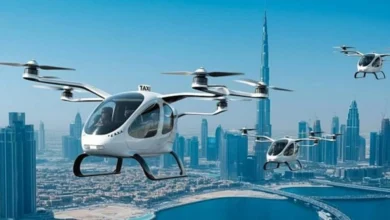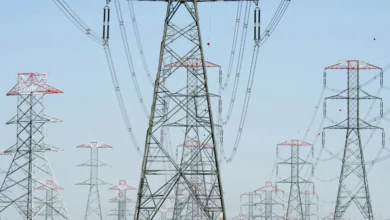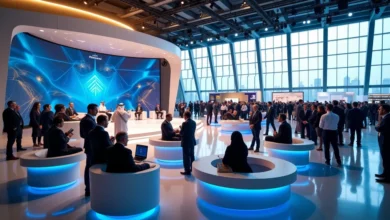
NASA's Williams, Wilmore Return After Record Space Stay
Astronaut Sunita Williams and crew member Butch Wilmore expected an eight-day mission. Their stay aboard the International Space Station stretched to nine months instead. The crew’s journey covered an amazing 121,347,500 miles as they circled Earth 4,576 times. Sunita Williams made history by setting a new female astronaut record. She spent 62 hours spacewalking during nine different excursions. NASA had to extend their mission because of technical problems with Boeing’s Starliner spacecraft. The crew stayed busy and completed about 150 scientific experiments. They logged more than 900 hours of research time. SpaceX’s Dragon capsule “Freedom” brought them safely back to Earth. Their extended mission showed how space exploration requires both flexibility and determination.
Boeing Starliner Launches Astronauts on Ill-Fated Test Flight
NASA astronauts Butch Wilmore and Sunita Williams blasted off from Cape Canaveral on June 5, 2024, aboard Boeing’s Starliner spacecraft. The team expected an eight-day mission. The flight was Boeing capsule’s first crewed test after several years of delays and technical glitches. The routine test turned into a nine-month ordeal due to a series of problems.
Technical Issues Emerge During Docking Procedure
The first signs of trouble showed up as Starliner approached the International Space Station on June 6. Mission controllers faced several technical problems at once:
- Five of the spacecraft’s reaction control system thrusters failed during the approach. Spacecraft computers automatically “de-selected” them because of poor performance
- The team managed to restore all but one of these thrusters, which allowed docking to continue
- The team detected three helium leaks in the propulsion system around docking time, adding to a single leak they found earlier
- A propellant valve moved slowly, which pointed to more unresolved issues
Boeing tried to minimize these problems at first. “Those are pretty small issues to deal with. We’ll figure them out for the next mission. I don’t see these as significant at all,” stated Mark Nappi, Boeing’s commercial crew program manager, hours after docking.
The situation turned out to be more serious than anyone first thought. The team found a fifth helium leak hours after Starliner docked with the station. These helium manifolds in the propulsion system stayed shut while the spacecraft was docked.
The team found the cause of the thruster problems through engineering analysis. Tests at NASA’s White Sands facility showed that a Teflon seal of a thruster component called a “poppet” had expanded and extruded as the thruster heated up. This restricted the propellant’s flow.
NASA Makes Critical Decision to Extend Mission
NASA moved Starliner’s planned June 14 departure to June 18 to avoid conflicts with a spacewalk. This was just the beginning of many delays as engineers worked to understand the spacecraft’s problems.
Starliner stayed at the station through late June because of ongoing thruster concerns. NASA pushed the departure to at least late July. The agency later announced more extensions into August while testing continued.
NASA and Boeing disagreed about Starliner’s safety during this time. Boeing believed the spacecraft could safely return the astronauts to Earth despite the issues. “We understand these issues for a safe return,” Nappi stated at a briefing.
NASA saw things differently. They worried most about several thrusters failing during critical flight phases, like the deorbit burn. “There was just too much uncertainty in the prediction of the thrusters,” Steve Stich, NASA’s Commercial Crew Program manager explained. “There was just too much risk for the crew”.
NASA announced on August 24 that Starliner would return to Earth without Wilmore and Williams. Ken Bowersox, NASA’s associate administrator for Space Operations, spoke about the tough choice: “Decisions like this are never easy, but I want to commend our NASA and Boeing teams for their thorough analysis, transparent discussions, and focus on safety”.
Boeing’s Starliner left the space station in early September and landed safely at White Sands Missile Range in New Mexico. The spacecraft descended through the desert darkness on autopilot. Williams and Wilmore stayed aboard the ISS, with their return planned for early 2025 on a SpaceX Dragon capsule.
The astronauts handled the unexpected extension like pros. “Butch and I knew this was a test flight, we knew that we would probably find some things (that did not work as expected), and we found some stuff,” Williams told CBS News. “We have both been in the military, both Navy guys, our deployments have been extended. You do what’s right for the team”.
The test flight added another setback to Boeing’s space program. The company had already faced years of delays and nearly AED 7.34 billion in cost overruns.
Astronauts Adapt to Unexpected Long-Duration Mission
Wilmore, 62, and Williams, 59, found themselves unexpectedly staying longer in orbit. These experienced Navy veterans quickly shifted from being visitors to becoming vital crew members aboard the International Space Station. Their military background helped them adapt to the changing situation with remarkable resilience. “Butch and I knew this was a test flight, we knew that we would probably find some things (that did not work as expected),” Williams stated. “We have both been in the military, both Navy guys, our deployments have been extended. You do what’s right for the team”.
Williams Takes Command of International Space Station
NASA astronaut Sunita Williams took command of the International Space Station three months into their extended mission. This marked an important change in their role from temporary guests to station leadership. She achieved a remarkable milestone during her command by setting a record for the most time spent spacewalking by a female astronaut. She logged 62 hours over nine separate excursions.
Her time as commander included managing critical operations. She and Wilmore successfully removed a faulty radio communications unit during a January 30 spacewalk after two failed attempts in previous spacewalks. This achievement added to her spacewalking record, bringing her total time to 62 hours and six minutes.
Daily Life Changes for Extended Stay Crew
The astronauts created new routines that centered on station operations, scientific research, and maintenance tasks as days turned into months. They took part in vital experiments, fixed equipment, and performed multiple spacewalks. Their schedule now matched that of long-duration crew members instead of short-term visitors.
Staying connected with loved ones became a vital part of their extended mission. Williams used internet calls from space to keep in touch with family. Wilmore missed many personal milestones, including most of his younger daughter’s senior year of high school.
The astronauts immersed themselves in scientific work as their return approached in March 2025. Williams worked with the Electrostatic Levitation Furnace. She exchanged samples in this research device that safely heats materials to extreme temperatures to study their thermophysical properties. Wilmore activated an Astrobee robotic free-flyer in the Kibo laboratory module. He equipped the device with tentacle-like grippers for autonomous demonstrations of detecting and grappling objects – research that could help future space systems remove debris and extend satellite lifespans.
How Astronauts Maintain Physical Health in Microgravity
Physical health became their top priority during their nine-month stay. The astronauts followed a strict exercise routine using specialized equipment to fight the effects of microgravity on the human body:
- Advanced Resistive Exercise Device (ARED): A piston and flywheel system that mimics weightlifting in weightlessness
- Second-generation treadmill (T2): Modified to simulate gravitational pull
- Cycle Ergometer with Vibration Isolation and Stabilization System (CEVIS): A computer-controlled stationary bike that maintains accurate workload
They spent about 2.5 hours each day exercising, switching between cardiovascular and strength training. This routine proved vital since astronauts in microgravity lose about 1% bone density monthly without proper exercise – compared to the 1% yearly loss experienced by elderly individuals on Earth.
Williams addressed media speculation about her apparent weight loss in November 2024: “I’m the same weight that I was when I got up here,” she said during a video interview, noting that her muscle mass had actually increased from the intense workout routine. “My thighs are a little bit bigger, my butt is a little bit bigger. We do a lot of squats”.
Both astronauts managed to keep their fitness levels strong throughout the mission, despite tabloid concerns about health issues. Williams confirmed they were ready to return: “Been working out for the past nine months. We feel strong and ready to tackle Earth’s gravity”.
What Does an Astronaut Do During a 9-Month Stay?
Williams and Wilmore’s daily tasks on the orbiting laboratory changed when their short stay turned into a nine-month expedition. The astronauts kept busy with scientific investigations, essential maintenance, and activities to connect with the public.
Scientific Experiments Conducted by Williams and Wilmore
The extended mission saw Williams and Wilmore spend 900 hours advancing space research. They completed more than 150 different experiments that made substantial contributions to many fields. Williams focused on how microgravity affects fluid systems in space – knowledge that’s vital for future long missions.
The BioNutrients project stood out as one of their most important research initiatives. This project looks at how beneficial bacteria can make fresh nutrients for astronauts during long space missions. The research could change how future space travelers get their essential vitamins and minerals while away from Earth.
Williams also helped develop new reactors for water recovery and fuel cells. These technologies play a vital role in sustainable long-term space living. Their research utilized the unique microgravity environment to study changes in gene expression, cellular functions, and 3D cell grouping that scientists can’t see on Earth. These studies wanted to improve disease modeling, treatment methods, and regenerative medicine.
Maintenance and Repair Operations
Much of the astronauts’ time went into maintaining the International Space Station, which never comes back to Earth. They handled both scheduled checkups and replacements as well as emergency repairs when equipment broke down.
“Housekeeping tasks include using a vacuum cleaner to clean the control panels and air vents and to remove all undesirable matter from the ambient air,” explains the Canadian Space Agency regarding station maintenance protocols. Daily cleaning stops small debris from getting stuck in critical circuits or entering astronauts’ lungs.
A defunct Russian satellite broke apart in orbit during May 2024. Williams and Wilmore, along with seven other astronauts, had to take emergency shelter inside their space capsules as debris came near the station. The whole ordeal showed the real dangers they faced even during normal operations.
Their maintenance work ranged from replacing old hardware to cleaning experimental equipment. All repairs needed to last since the station operates continuously. Zero-gravity created unique challenges that required tools and loose parts to be tied down so they wouldn’t float away during repairs.
Communication with Earth and Public Outreach
Staying in touch with Earth proved vital for both mission work and personal wellbeing. Many people think astronauts can send text messages or use smartphones in space, but they can’t due to lack of cell service. They use different systems instead:
“We use our computers to connect to the Internet and send pictures directly to our friends and family through email,” explains NASA’s documentation on space communication. The astronauts made phone calls using Internet Protocol phones routed through Johnson Space Center in Houston. The connections stayed remarkably clear despite being in orbit.
Williams and Wilmore took part in education initiatives and connected with students through the Amateur Radio on the International Space Station (ARISS) program. ARISS sets up 60-80 HAM radio contacts each year between orbiting astronauts and students worldwide. These contacts help inspire the next generation of space explorers.
The astronauts shared their experiences through NASA’s public outreach programs, including Destination Station events where people learn about the ISS and meet astronauts. Their efforts helped more people understand space research and made their mission’s scientific achievements available to everyone on Earth.
NASA Engineers Devise Return Strategy
“The timeline came to the point where we had to decide, is Starliner coming back with us or without us?” — Barry Wilmore, NASA Astronaut on Starliner Crew Flight Test mission
NASA engineers started working on another plan to bring astronauts Williams and Wilmore safely back to Earth after they found Boeing’s Starliner spacecraft too risky for a crewed return. Agency officials worked hard through August 2024 to create a complete rescue plan that extended the astronauts’ mission to nine months.
SpaceX Dragon Capsule Becomes the Rescue Vehicle
NASA announced on August 24, 2024, that Starliner would return to Earth empty. SpaceX Dragon capsule would bring them back home instead. This decision followed the largest longitudinal study that showed ongoing problems with Starliner’s propulsion system. These issues created “too much uncertainty in the prediction of the thrusters” according to Steve Stich, NASA’s Commercial Crew Program manager.
SpaceX Dragon offered several key advantages as a rescue vehicle:
- Multiple successful crewed missions since 2020 proved its reliability
- Room for up to seven passengers traveling to and from Earth orbit
- Advanced launch abort system with eight SuperDraco engines that could move the spacecraft half a mile away from danger in under eight seconds
- The only spacecraft flying today that could return significant cargo to Earth
SpaceX had already become NASA’s primary provider for astronaut transportation services. The company helped NASA restore America’s independent space travel capabilities since 2020. The U.S. didn’t have this ability from 2011 until then.
Crew-9 Mission Adjusted to Accommodate Stranded Astronauts
NASA made unprecedented changes to their standard crew rotation schedule. Engineers adjusted the Crew-9 mission parameters completely. NASA decided to launch Crew-9 with just two astronauts—NASA’s Nick Hague and Roscosmos cosmonaut Aleksandr Gorbunov. This was unusual because Crew Dragon missions usually carry four astronauts.
Mission commander Zena Cardman and mission specialist Stephanie Wilson were removed from the original schedule. This ensured two empty seats for Williams and Wilmore’s return journey. NASA confirmed these changes on August 30, 2024, finalizing Crew-9’s new setup.
Dragon Freedom capsule launched on September 24, 2024, carrying Hague and Gorbunov to the space station. Starliner could now undock and return empty, which kept a docking port free at the station. The aircraft landed in New Mexico on September 7 with no one aboard.
The challenges went beyond just seating arrangements. NASA had to adjust seats on the Crew-9 Dragon and change the cargo manifest. They needed space for extra cargo, personal items, and Dragon-specific spacesuits for Wilmore and Williams. A Northrop Grumman cargo ship delivered their clothes and personal items several months later.
The return flight couldn’t happen until Crew-10 reached the space station. Problems with Crew-10’s new Dragon capsule pushed the February 2025 schedule to March. This delay added another month to Williams and Wilmore’s extended stay.
Crew-10 finally launched on March 14, 2025, and docked 28 hours later. Their arrival meant Crew-9’s Dragon Freedom could bring Williams and Wilmore back to Earth. They spent 286 days in space—way beyond their planned eight-day mission.
Astronaut Sunita Williams and Crew Begin Journey Home
The trip home for astronauts Sunita Williams and Butch Wilmore started in the early hours of March 18, 2025. Their nine-month stay aboard the International Space Station came to an end. NASA astronaut Nick Hague and Russian cosmonaut Aleksandr Gorbunov joined them as the Crew-9 team headed back to Earth after their unexpectedly long mission.
Undocking Procedures and Orbital Maneuvers
The Freedom Dragon capsule detached from the ISS Harmony module’s space-facing port at 1:05 a.m. ET Monday. The astronauts spent two hours testing pressure systems, checking communications, and verifying seals to ensure their spacecraft was ready. They put on their re-entry suits with boots and helmets. The crew shared a few laughs and hugs with their station teammates and took photos before they sealed themselves inside the capsule.
The spacecraft moved away from the orbital laboratory after separation. It followed a carefully planned path back to Earth. Dragon needed 17 hours to come home and performed several orbit-lowering maneuvers. The spacecraft gradually reduced its altitude to prepare for atmospheric re-entry. SpaceX’s Dragon takes a longer time to return than Russia’s Soyuz spacecraft. This slower descent helps reduce heat stress and the effects of G-force on the crew.
The Fiery Re-entry Through Earth’s Atmosphere
Dragon fired its engines for seven-and-a-half minutes at 5:11 p.m. ET. This deorbit burn slowed the craft enough to start its descent. The spacecraft hit Earth’s atmosphere 27 minutes later. It traveled southwest to northeast toward Florida’s Gulf Coast at about 17,000 mph (27,359 km/h).
The heat shield protected Dragon as it pushed deeper into the atmosphere. Temperatures soared to 3,500 degrees Fahrenheit. The extreme heat created a plasma shield around the vehicle that blocked communications with mission control. The spacecraft’s blunt shape created strong shock waves during re-entry. This design keeps the heat away from the vehicle and helps slow it down.
Dragon’s four main parachutes opened nine minutes after entering the atmosphere. The spacecraft slowed from 17,000 mph to less than 20 mph for landing. A clear blue Florida sky welcomed Dragon as it descended toward what NASA called a “calm, glasslike ocean.” Mission controllers stayed in touch with the crew throughout their return. They only lost contact briefly when the plasma formed around the spacecraft.
SpaceX Recovery Teams Execute Perfect Splashdown Operation
SpaceX recovery teams executed a flawless retrieval operation off the Florida coast that marked the end of their historic nine-month mission on March 18, 2025.
Parachute Deployment and Ocean Landing
Dragon Freedom’s descent slowed at 5:54 p.m. ET as its drogue parachutes deployed above Earth. The four large main parachutes expanded in stages to reach their full 116-foot diameter. This engineered system brought the spacecraft’s speed down from 17,000 mph to under 20 mph. The spacecraft made a gentle splashdown at 5:57 p.m. ET in the Gulf of America off Tallahassee.
“Nick, Aleks, Butch and Suni, on behalf of SpaceX, welcome home,” mission controllers radioed to the astronauts. The gumdrop-shaped vehicle bobbed on unusually calm waters while its exterior showed char marks from enduring 3,500-degree Fahrenheit temperatures during re-entry.
Dolphins Welcome Astronauts Back to Earth
A pod of dolphins created an unexpected welcoming committee and swam around the spacecraft as it floated in the ocean. “The unplanned welcome crew! Crew-9 had some surprise visitors after splashing down this afternoon,” NASA’s Johnson Space Center shared on social media. These marine mammals circled the vessel while recovery teams prepared the capsule for the astronauts’ departure.
Medical Teams Assess Returning Space Travelers
Safety teams rushed to the capsule in fast boats, followed by a recovery vessel. The four astronauts emerged from their capsule within an hour, smiling and waving despite their extended mission. Recovery teams escorted each crew member away on reclining stretchers—standard protocol for astronauts readjusting to Earth’s gravity.
The astronauts underwent a detailed medical evaluation before meeting their families. NASA’s Johnson Space Center in Houston received the crew members to begin their 45-day rehabilitation program. Their reconditioning program helps restore mobility, balance, flexibility, and strength through customized exercise regimens designed for readaptation to Earth’s gravity.
The historic nine-month space mission proved human adaptability and resilience in space exploration. A routine eight-day Starliner test flight became an incredible trip that saw astronauts Williams and Wilmore cover over 121 million miles and orbit Earth 4,576 times. The crew showed steadfast dedication as they completed 150 scientific experiments and recorded 900 research hours.
Williams made history by setting a new female spacewalking record with 62 hours across nine excursions. NASA’s team showed exceptional skill when they smoothly switched from the troubled Starliner spacecraft to SpaceX’s reliable Dragon capsule for the crew’s return.
The mission ended perfectly with a splashdown operation, and the crew even got a surprise welcome from a pod of dolphins. Their safe return marked a soaring win and showed the strength of America’s commercial spaceflight program. The mission’s many achievements and successful completion, despite its original challenges, will without doubt influence future space exploration strategies and emergency protocols.





